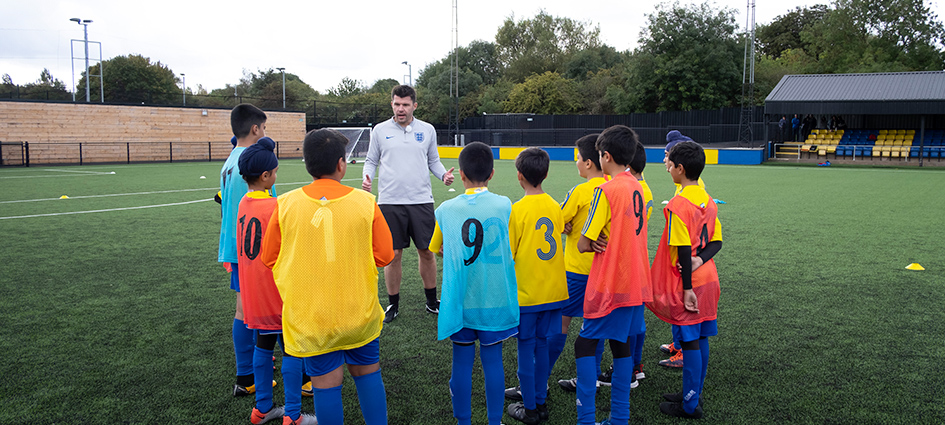
Introducing the Youth Development Phase DNA
- The Boot Room
- 04 May 2020
Working with players aged 12-16? Explore the Youth Development Phase DNA on The Boot Room, which is designed to help coaches working with players in this age group.
The Youth Development Phase DNA highlights the specific needs and development of children aged 12-16, to show what experiences they need at this stage of their lives.
The quality of their experiences of football is vital to develop a love of the ball and a love of the game – and as a coach: that’s where you come in.
Over 11 million people play football in England and many of them are young people in the Youth Development Phase.
In this age group, change and growth really sets in and youngsters develop both as people and as players. As a coach in the Youth Development Phase you’ve got a vital role in helping them develop in a safe environment to reach their potential – whatever that might be.
The Youth Development Phase DNA has its roots in the England DNA and provides a bridge between the Foundation Phase (5-11) and the Professional Development Phase (17-21). It aims to inspire, empower and support coaches to become excellent developers of creative players to allow participants, at any level, to be the best they can be, and therefore, ultimately supporting our England international teams.
At The FA we believe football is ‘For All’, so it’s important to understand the differences that exist within this age group and to adjust your coaching to players' various needs and motivations.
A coach working with an academy team training four times a week, might provide a variety of activities including informal play; deliberate practice; and a varied games programme. In contrast to this, a coach who works with an after-school club that meets once a fortnight might decide to prioritise ‘play’ and social interaction.
To apply the content to your own environment, you’ll need a sound understanding of your own unique coaching context (be that a club, school, academy or other).
As a starting point, always consider:
- who you’re coaching
- how you’re going to coach
- what you want to achieve
- and why.
Age is just a number
While we group our players into age phases, it’s important to remember that this is simply a guide. Youngsters develop at very different rates and, compared to their teammates, a player might be more or less advanced in a variety of ways. They also develop differently across the four corners (technical, physical, psychological and social). These corners rarely (if ever) operate in isolation and you should consider their collective impact very carefully. For example, supporting a player’s development in the psychological corner could also improve their social interactions, physical robustness or even technical ability.
The Youth Development Phase DNA will help you gain a better understanding of your players’ developmental needs. It will also help you to understand yourself as a coach; examine the context you work in; get to know your players and apply principles of play and practical ideas for modern coaching.
To find out more, explore our Youth Development Phase DNA playlist.


